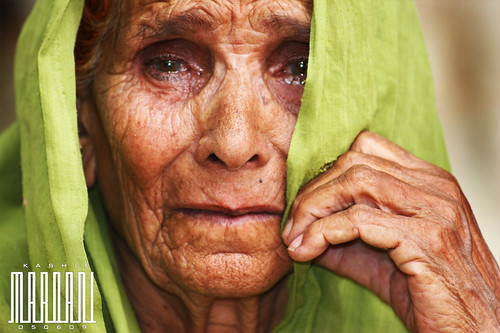Prostitution Runs In The Family

Ever imagined that a family could encourage its daughters to become prostitutes?
Rajasthan’s Nat community has a tradition of prostitution. This nomadic tribe which previously engaged itself in street performances later adopted “commercial sex” as its traditional occupation. Other communities like Rajnat, Kanjar and Bedia tribes also follow similar tradition in the state.
Family Irony
The Nat community is patriarchal and male dominated. The women in the community may be divided into two groups prostitutes and non-prostitutes. The sex workers in spite of their earning status are shunned by both society and their families. They are given less respect in comparison to the married women.
The sex workers are not allowed to attend auspicious rituals or marry within the community. Conversely, the married women are expected to be chaste. They are expected to wear veils and maintain distance from elders. Pre-marital sex and extra-marital affairs are condemned in the Nat society.
Nat males are forbidden to be clients of the sex-workers. The sex-workers are expected to have professional relations with their clients. They have to share their profits with the pimps and sometimes retired female sex workers. It is observed that a retired sex-worker totally depends on the income of these young prostitutes for her survival.
A sex-worker is the most important earning member in the family who is also bestowed with the responsibility of getting her brother married. However she is not allowed to marry with in the community.
How do they enter the profession?
Segregation of girls start at a very early age. The “prospective” sex workers are given training by pimps and retired prostitutes where as the other girls are taught the fundamentals of family life.
Lack of education, awareness, empowerment and institutionalization are major reasons for the girls to enter the profession.
Ceremony of Nath Uttarai
The clients pay highly for a virgin girl. The first intercourse is mark of celebration with in the tribe. The girl who is dressed like a newly-wed, wears a nose ring which has to be removed by her first client. The client is considered the husband of the girl and he is given preference over other clients in future. The high price for virgin girls motivates the families to sell their daughters soon after attaining puberty.
Concerns
1. Lack of education and knowledge available to young women has adversely affected their ability to make decisions. 2. They are exploited by both pimps and retired female sex workers. 3. There are greater chances of acquiring sexually transmitted diseases especially AIDS as the sex workers practice unprotected commercial sex. There is considerable lack of awareness with in the community with regard to sexually transmitted diseases. 4. The young girls are now being trafficked by the pimps to other areas including Delhi and Mumbai. The clients in the metropolitan cities pay higher prizes than those in the villages. 5. The greed for higher price lures the parents to sell their daughter as soon as they attain puberty. 6. Although they are the earning members of the family, their status is low. 7. The children are financially and socially depended upon their maternal uncle. 8. Since the sex-workers are not allowed to marry in the community, their is an increase of marriages taking place between a Nat Male and A Non-Nat Female.
Conclusion The female sex workers amongst the Nats are being exploited at every stage both by their family and society. The income generated by selling their bodies barely reaches them. The intermediaries take a chunk of profit from their earning. Unprotected commercial sex with clients is prevalent. The rights of their children are hardly enforced. Not only the prostitutes but their children also suffer considerably.
Awareness must be spread amongst the women. Alternative employment should be arranged for those who wish to leave the profession. Education must be ensured for both males and females. The retired sex-workers must be rehabilitated. Presence of pimps and female trafficking must be checked. The involved of minor girls in the trade must be curtailed. Efforts should be made to bring the community with the mainstream. Gradual changes must be brought in the perception of the community as a whole.
Picture Credits:Picapp
Read more
